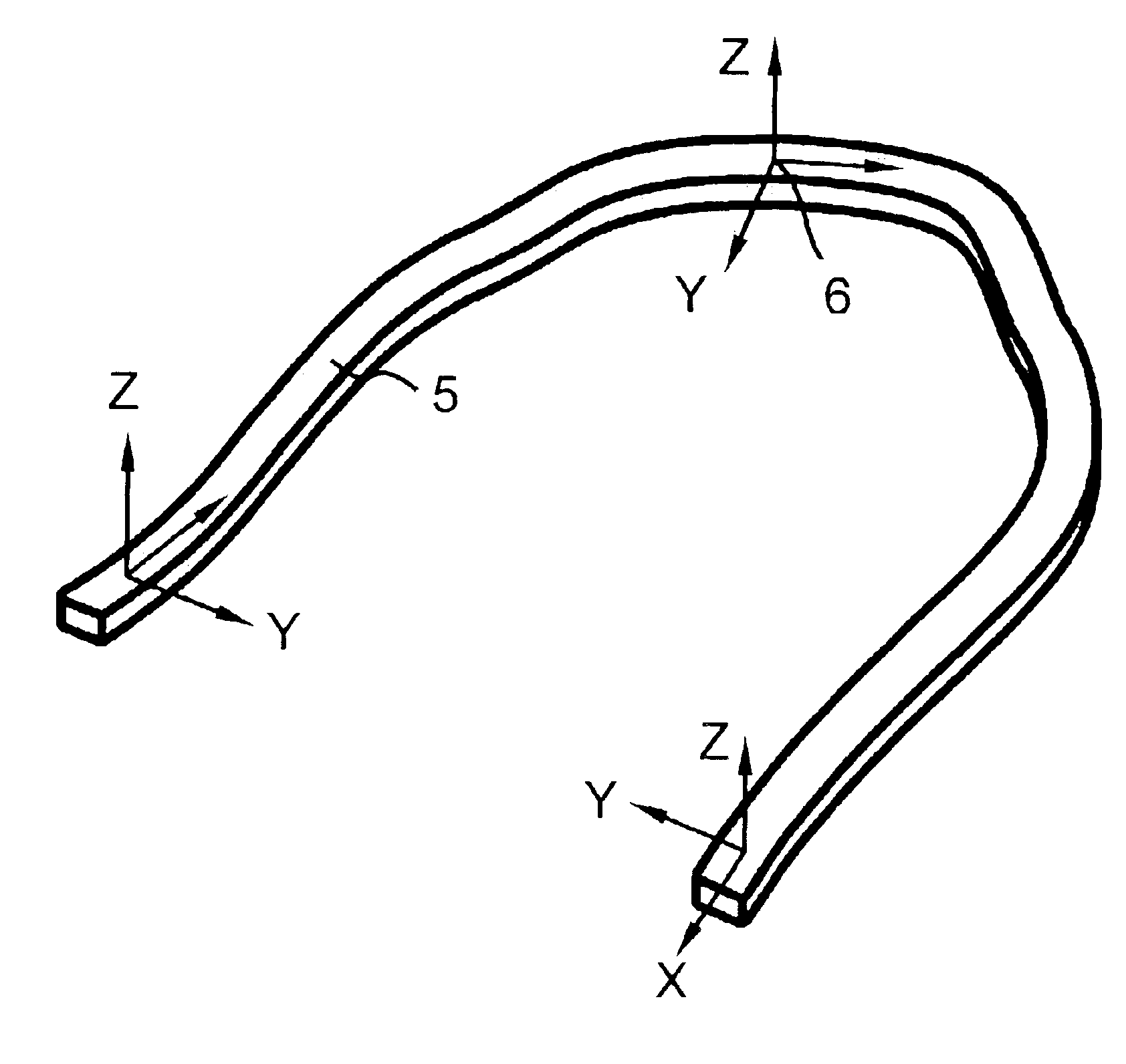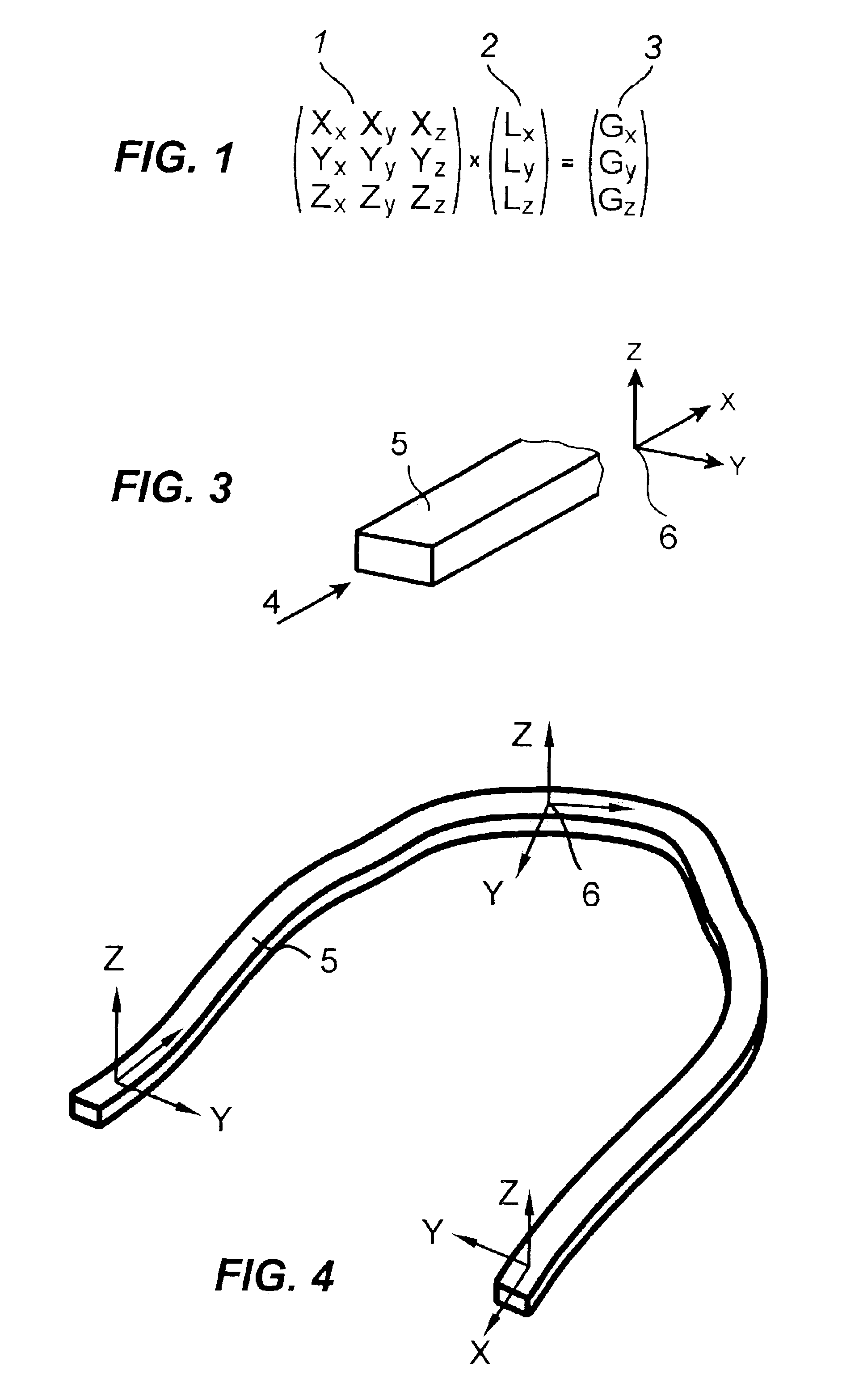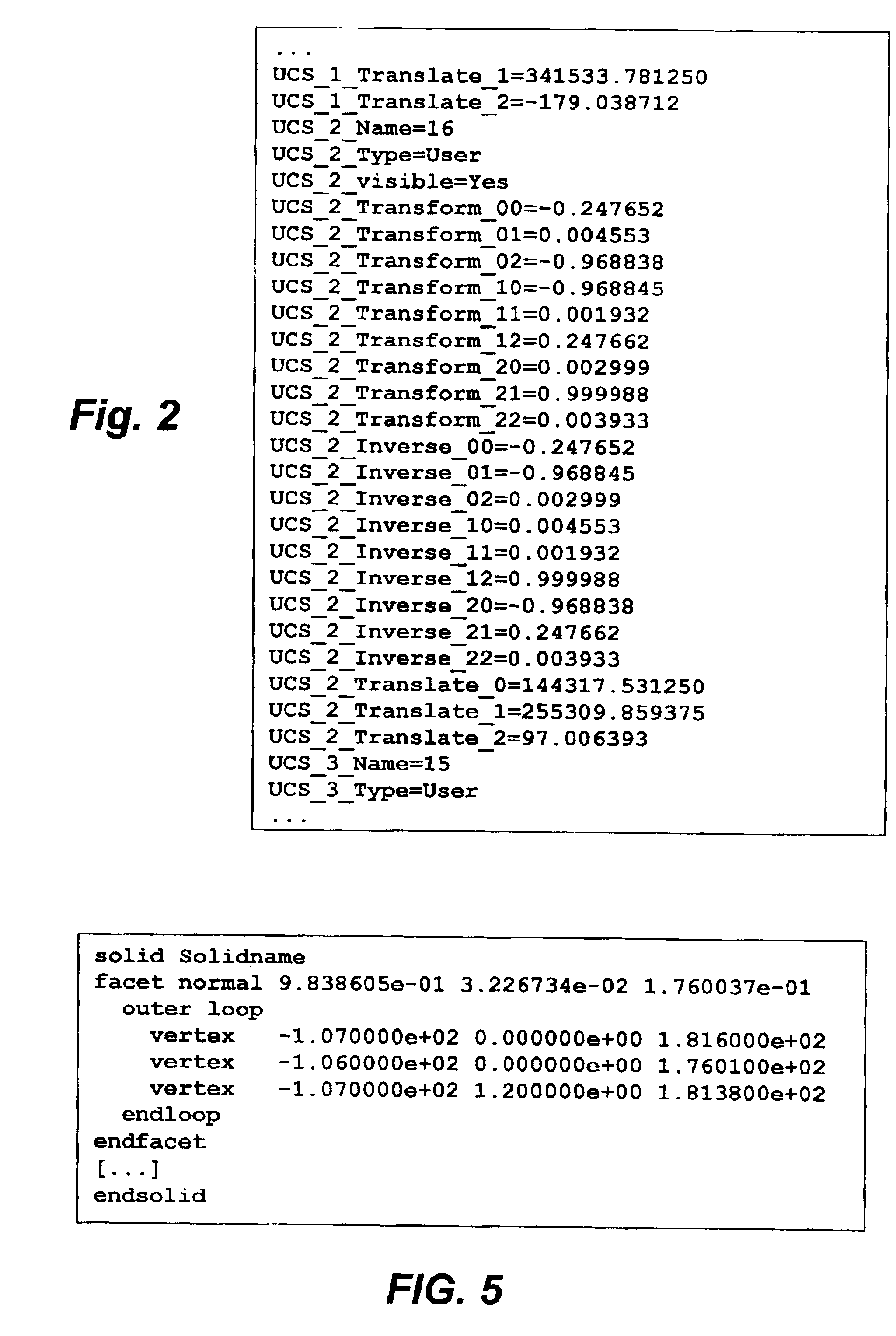Method and system for customizing an orthodontic archwire
a technology for orthodontic archwires and custom wires, applied in dental surgery, dental tools, manufacturing tools, etc., can solve the problems of hardly being modified by the orthodontist in order, lingual tooth surfaces are by far not as generic, and wires require a high degree of customization. , to achieve the effect of reliable and efficien
- Summary
- Abstract
- Description
- Claims
- Application Information
AI Technical Summary
Benefits of technology
Problems solved by technology
Method used
Image
Examples
Embodiment Construction
Archwire Descriptions
[0054]The methods disclosed in this invention have in common that as a starting point they need a definition of the archwire in a numerical format. The term “numerical” is supposed to distinguish a mathematical or abstract description of the shape of an archwire from a concrete representation like a 1:1 drawing or a physical sample.
[0055]The term “numerical description” of an orthodontic archwire, as used in the claims, is interpreted to mean a description of the physical shape of an orthodontic archwire in numerical format. Such a definition may include additional information, like for instance the cross-section, the wire material, the lengths of specific wire portions and other valuable data, but this additional information is not mandatory. Such a definition may furthermore be a continuous description, defining the wire shape along its complete length, or a discrete or discontinuous description, defining only portions of the wire, while other portions remain ...
PUM
| Property | Measurement | Unit |
|---|---|---|
| distance | aaaaa | aaaaa |
| slot size | aaaaa | aaaaa |
| height | aaaaa | aaaaa |
Abstract
Description
Claims
Application Information
 Login to View More
Login to View More - R&D
- Intellectual Property
- Life Sciences
- Materials
- Tech Scout
- Unparalleled Data Quality
- Higher Quality Content
- 60% Fewer Hallucinations
Browse by: Latest US Patents, China's latest patents, Technical Efficacy Thesaurus, Application Domain, Technology Topic, Popular Technical Reports.
© 2025 PatSnap. All rights reserved.Legal|Privacy policy|Modern Slavery Act Transparency Statement|Sitemap|About US| Contact US: help@patsnap.com



